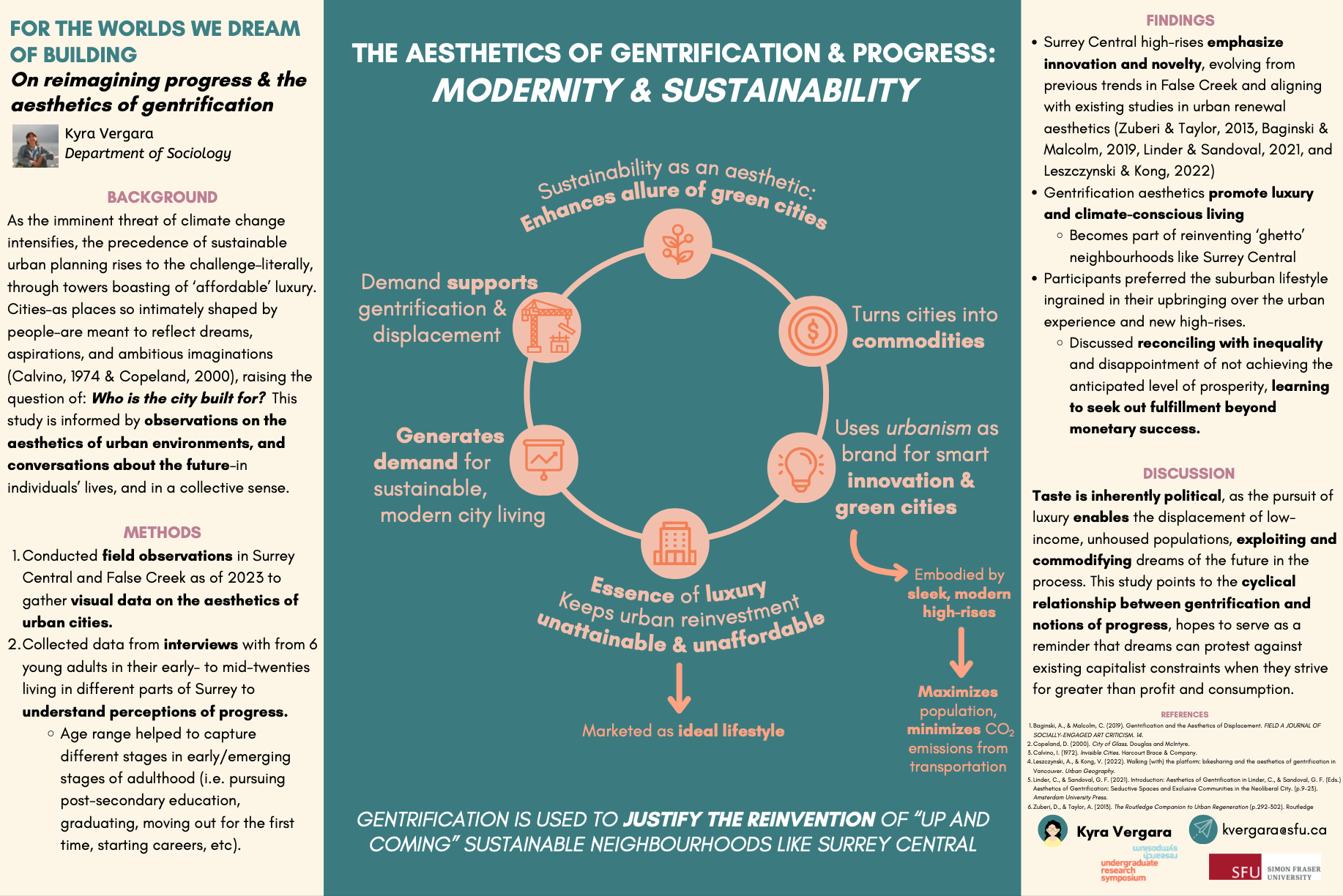For the worlds we dream of building: On reimagining progress & the aesthetics of gentrification
Main Article Content
Abstract
As a method of perpetuating income-based divides, gentrification carries with it the sentiment that urban spaces must progress from being homes for lower-class, racialized communities, into playgrounds and experimental spaces for the rich. How has sustainability permeated the fields of real estate marketing and urban planning in the Metro Vancouver context? How does the relationship between gentrification and sustainable development unfold in peoples’ understandings of progress, and imaginations of the future?
Turning to semi-structured interviews and field observations, this study examines the cyclical relationship between notions of progress and the aesthetics of gentrification. In dissecting the intersections of gentrification and ideas of progress, what is unearthed is the consequences of sustainability when reduced to mere branding for high rises–commoditized and made exclusionary for those affluent enough to afford greener lifestyles.
Article Details

This work is licensed under a Creative Commons Attribution-NonCommercial-NoDerivatives 4.0 International License.
References
Baginski, A., & Malcolm, C. (2019). Gentrification and the Aesthetics of Displacement. FIELD A JOURNAL OF SOCIALLY-ENGAGED ART CRITICISM. 14.
Copeland, D. (2000). City of Glass. Douglas and McIntyre.
Calvino, I. (1972). Invisible Cities. Harcourt Brace & Company.
Leszczynski, A., & Kong, V. (2022). Walking (with) the platform: bikesharing and the aesthetics of gentrification in Vancouver. Urban Geography.
Linder, C., & Sandoval, G. F. (2021). Introduction: Aesthetics of Gentrification in Linder, C., & Sandoval, G. F. (Eds.) Aesthetics of Gentrification: Seductive Spaces and Exclusive Communities in the Neoliberal City. (p.9–23). Amsterdam University Press.
Zuberi, D., & Taylor, A. (2013). The Routledge Companion to Urban Regeneration (p.292–302). Routledge

